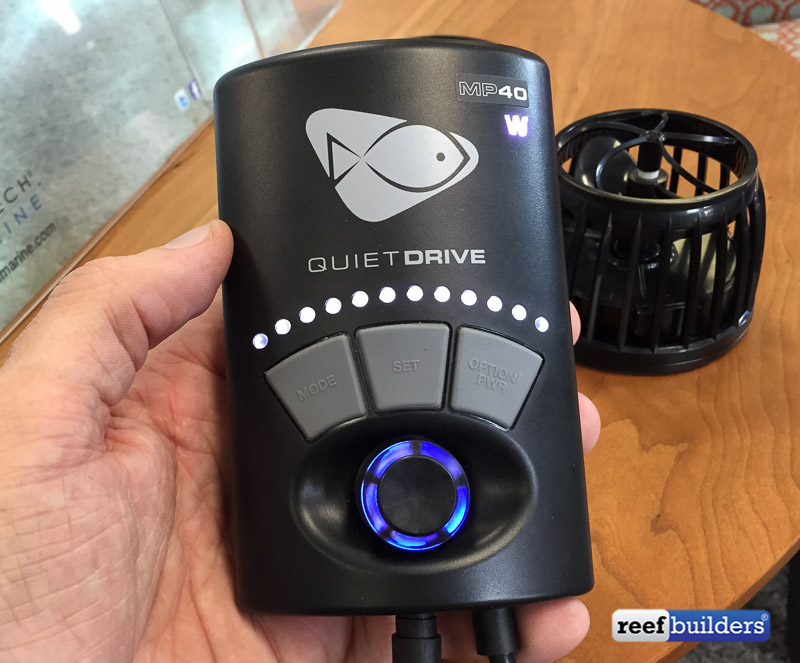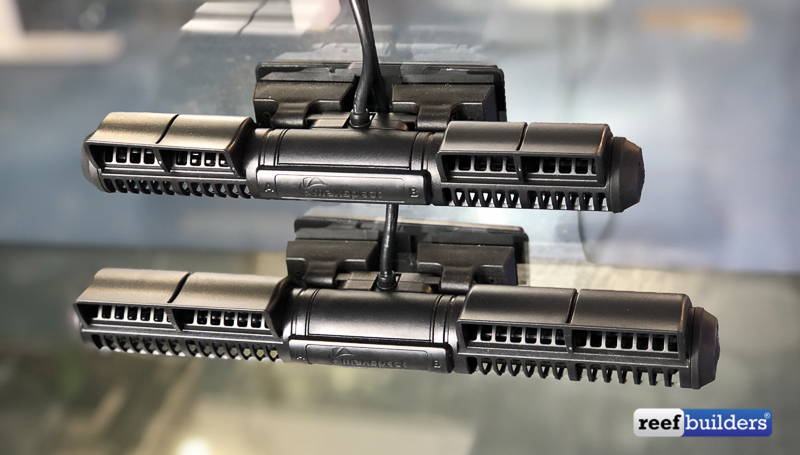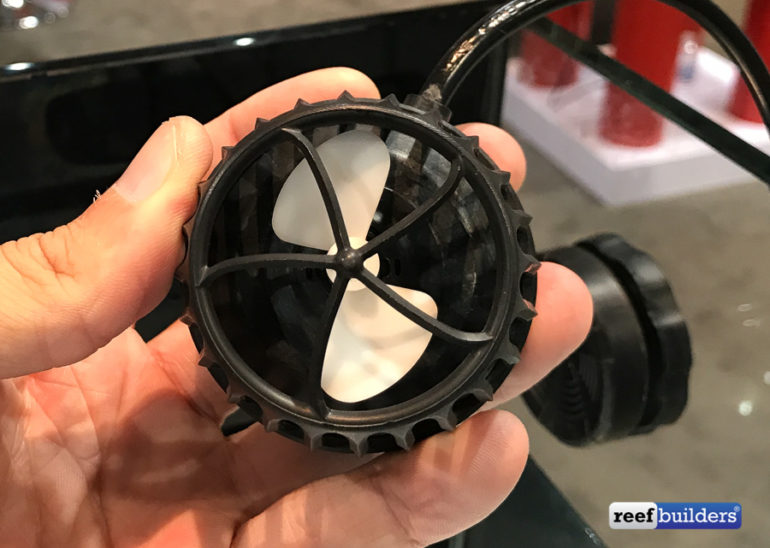It’s that time again when we answer all of the questions that get fired at us on a particular subject, even the most basic ones. Here are our answers to all the most basic questions we’re asked each week on wave pumps.
What does a wavemaker do?
A wavemaker is a powerhead or a water pump that’s designed to circulate large volumes of water inside an aquarium. Most commonly used in reef tanks to provide essential water flow for live corals, some wavemakers are controllable and by switching on and off in quick succession via a controller, they can cause a push and pull, ebb and flow of water in the tank a bit like in the ocean. And sometimes if the frequency is set right they can even make a small wave, hence the name.

Why are wavemakers so expensive?
Small, basic wavemakers may only be $50 or so, but they won’t be electronically controllable so won’t be able to create a pulse of water or a wave. They can still provide water movement though and that’s far better for corals than no flow or poor water flow generated by a standard filter. Wavemakers divide into those that are AC-powered and DC powered, their flow rate, controllability, and the materials that they are made from. A good wavemaker may cost a few hundred dollars but it will likely come with a rust-proof impellor shaft, a wide outlet, a high flow rate, and a specially designed impellor. Good wavemakers can have their output controlled by the user (turned up or down electronically,) but also they can obey preset flow patterns to create natural currents as we see on a coral reef. That can be good for corals as the sea moves in many directions, but so pleasing to watch as the fish and corals are blown around by random, alternating flow. You can control some on your phone too.
Do I need a wavemaker in my tank?
For corals, unless it’s a tiny tank of just a few gallons, yes, you will need a wavemaker. Many corals survive in deep water without light, but no coral can survive without water movement. It’s what brings them their food and washes away their waste. They use strong currents to disperse their eggs and sperm too. If you want to keep the types of corals you see in saltwater aquarium stores, 99 times out of 100 you will need a wavemaker. Some people have two or more, depending on the tank size.
What size Wavemaker do I need for a 250 Litre tank? How big of a Wavemaker do I need?
We would aim for a minimum of 20 times the total tank volume turnover per hour, so a 250-liter/66-gallon tank will need a minimum of 5000lph/1320gph, although as the tank becomes more cluttered and congested with corals, double that again to two wave-making pumps each delivering 5000lph/1320gph or 40 times turnover. Some corals like mushrooms like quiet areas and less flow, whereas some corals that live on the reef crest and are battered by waves can tolerate (and prefer,) flow of over 100 times the total tank turnover per hour.
Should you keep a Wavemaker on all the time? Should you turn off the wave maker at night?
If you only have one wavemaker and it has one fixed speed, then yes, it should be on 24 hours per day, 365 days per year. If you have two pumps and a controller you can get one to come on when the other goes off, creating a push-pull across the aquarium and causing the coral tentacles to sway. If you have a controllable DC wavemaker then certain preset flow patterns may cause the output to go up and down on a cycle, or even turn the pump on and off in quick succession, but this must also happen day and night on an ongoing basis.

Is a wavemaker good?
Yes, wavemakers changed the way we keep corals and are a large part of a modern, successful reef tank. The sea never stops moving and our corals are from that environment.
Do wavemakers oxygenate water?
Yes, wavemakers oxygenate water by making ripples on the surface that increase the surface area and allow oxygen in, and carbon dioxide out. Some powerheads come with venturi devices that suck in air and blow tiny bubbles into the water. Airstones connected to air pumps create tiny bubbles too, but it’s the action of the bubbles breaking on the surface that allows the oxygen in, not so much the diffusion of bubbles in the water. The more surface agitation you can create, the more you will oxygenate the water.
Where is the best place to put a wave maker?
Most people put them in the rear corner facing diagonally across the length of the tank, and about two-thirds up. If you have two, put them in opposite corners or on opposite end panels of the tank. Most wavemakers are black to blend in with the black backgrounds of most reef tanks.
Which Wavemaker is best?
Most good wavemakers provide strong, controllable flow across a wide area of the tank, but at a low wattage. Good wavemakers can be turned up and down and programmed to create different flow patterns. They should be quiet too. We like wavemakers from EcoTech, AI, Sicce, Tunze, Red Sea, Octo, and Maxspect to name just seven, but there are lots more out there too. The Reef Builders website has featured and reviewed hundreds of wave-making pumps over the years so here is a good place to start.

What are the different types of Wavemakers? What is the difference between a powerhead and a Wavemaker?
The two main types are propellor pumps and gyre pumps. Propellor pumps are redesigned powerheads with large outlets and propellor-like impellors, and gyre pumps are cylinders with rotor blades, a bit like a Combine Harvester. Both are highly effective, and controllable, and produce far more water movement than a standard powerhead or power filter with a small spout. It all comes down to personal taste and budget. Although they are both centrifugal pumps, powerheads tend to have less power and aren’t controllable like a wave pump. Powerheads were designed primarily to power under gravel filters and small internal canister filters. Wave pumps are designed specifically to move water in reef aquariums.
How many wavemakers do I need?
One controllable wavemaker capable of turning over 40 times the tank volume would be the minimum for any reef tank, but many reefkeepers have two pumps to achieve alternating flow or even four pumps to eliminate dead spots and ensure that the water is moving in every corner of the tank.




